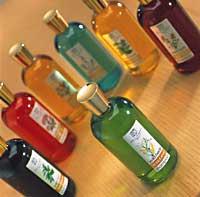Chemistry for the Hairdresser
2005/02/01 Kortabitarte Egiguren, Irati - Elhuyar Zientzia Iturria: Elhuyar aldizkaria
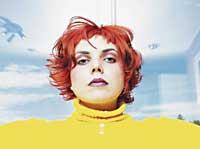
Between two and six years. That's about the time that lasts each of the 60,000 to 150,000 hairs we have in the head. Every day we lose an average of 100 hairs, the hair that falls under normal conditions has finished its life cycle, has died and will be replaced by another healthy. Therefore, as can be seen, the hair is always in a process of renewal. When dead hair has no spare, we are facing a problem of alopecia. This phenomenon mainly affects men, but also women lose hair, although to a lesser extent.
The main component of the hair is the keratin protein, which is also found in the skin and nails. However, the natural color of the hair depends on the proportion and quantity of other two proteins or the type of melanin, eumelanin and feomelanine. Eumelanin is responsible for brown or black hair, while feomelanine is responsible for yellow and reddish hair. The lack of these two proteins produces white-grey hair.
The hair is a part of the body without life, since when cutting it produces no bleeding or pain. And, even if it seems a lie, the money to take care of this lifeless protein consumes unthinkable amounts. In the year 2000, for example, 21 billion euros were spent on hair beautification products worldwide.
Color change Color change
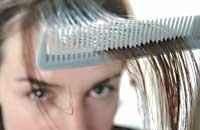
The hair color change is not the current one. The hair has been dyed for thousands of years with plants and minerals. Many of these natural dyes contain pigments and synthetic dyes cause color change reactions. However, when the hair color change is made with these natural dyes it doesn't last long and as the color is cleared it disappears. Henna is the clearest example of natural dyes.
The bleaches illuminate the color of the hair. They react with melanin present in the hair. This chemical reaction between the two is irreversible, since the decolorants oxidize the melanin molecule. This oxidized molecule is a colorless. In general, bleached hairs have a yellowish color, that is, a characteristic color of keratin. The most common bleaching agent is hydrogen peroxide or oxygenated water that reacts in a basic solution with melanin.
To obtain the rest of colors, dyes are used. To dye the hair there are different dyes, both natural and synthetic, according to the taste of each one. Among the permanent dyes are chamomile, saffron and walnut. All of them give color to the cuticle. Metallic dyes, however, form a kind of lacquer on the surface of the hair and finally, synthetic organics are introduced into the hair. The latter are derived from aniline that need hydrogen peroxide to develop color. Permanent vegetable dyes stain the stem of the hair without entering the interior, fixing it and preserving it for a long time.
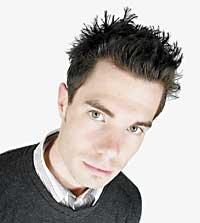
In general, three sections can be distinguished in the vertical cutting of the hair: the marrow, the bark and the cuticle. The marrow is the internal structure of the hair and does not fulfill important functions in humans. The cuticle is the outer layer of the hair and it is essential that it is open for the coloring to enter the hair.
When opening the cuticle the coloring reacts with the bark to insert or remove the color. Ammonia is the chemical agent that extends the cuticle and allows the color to enter the bark. The cuticle is the one that protects the bark and gives shine to the hair. It is a part of the hair that suffers, among others, the effects of cosmetics and, often, according to the treatment of the hair, cuticle cells are perceptible. Therefore, it is recommended the use of hair conditioners since they protect and protect the closed cuticle and the new color.
In short, in general with all the dyes the process is given in two steps. First the hair loses the color it has at that time and then takes a new color.
One of the characteristics of the hair is the color and another the shape. This form is a helix at which the hydrogen bonds are formed and broken continuously between the spirals of the helix. Thanks to these hydrogen bonds, and with the help of water, hair can adopt different forms. One of the main features of hydrogen bonds is its flexibility. The joints are broken and regenerate with ease and even easier if the hair is wet. Why do you think it is easier to comb when the hair is wet? There you have the answer.
Smooth or curly hair?
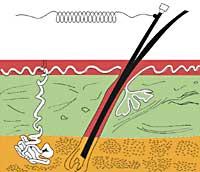
In addition to hydrogen bonds, disulphide bridges are the basis of the hair form in space, the base of the propeller. Hydrogen and disulfide bridges are forces of attraction between hydrogen and sulfur atoms, respectively. These forces of attraction occur when two atoms of hydrogen or sulfur between equal and different molecules approach and, as it were, stabilize the structure of the molecule.
Smooth or curly hair will depend on the disulfide bridges that form between the proteins of the hair. In other words, the higher the number of disulfide joints between these proteins, the more curly the hair is and, on the contrary, the smoother the less the number of joints.
With the help of chemicals, disulfide bridges break or create new ones, anyone who wants can change their hair. However, this change is usually short-term. In fact, when the influence of the chemicals is exhausted, the hair loses these properties and, in addition, the new hair that grows again grows in its natural state.
Beware of the changes!
Dyes used for changing hair color, as well as dyes, if used with some assiduity, can damage the hair. It would not be bad that before using any product of this type is tested in a small area of hair or in the hairs of the arm to show that it does not provoke irritation or irritation.

Moreover, the more we take care of our hair, the healthier it will be, but always without being obsessed, because all excesses are harmful. The best hair treatment is to keep it clean. Washing your head is often not counterproductive, but of course if quality products are used. It is also recommended to cut hair occasionally to be stronger, but it is not true that wearing long hair weakens.
Why is hair bleached?
As the hair ages, little or more, it is bleached; there is no doubt about it. It begins little by little, but once started there is no turning back. In fact, wrinkles and white hair are signs that we are not so young.

The pigment that gives color to the hair is melanin. Melanin is formed by cells located in the root of the hair. From young cells produce a lot of melanin, but as they age these cells die and the hair loses the color of their youth.
The hair whitening process is usually long, between 10 and 20 years, depending on its genetic characteristics. Some start to peel their hair very young and others in old age or even in the hour.
However, there are human groups that do not lose hair color, among other things because their hair has never had color: they are albino people who do not have cells to create melanin. A genetic mutation makes them not have the capacity to produce melanin and therefore always have white hair.
The shampoo, theme necessary
They say that the custom is needed and that at present shampoo for washing the hair is a necessary topic for the daily toilet. According to custom, the conditioner, the hardener and other products can also be considered necessary, but the most basic in terms of hair is shampoo.
The basic function of shampoo is to remove the proper fat from the hair, which is the one that adheres to dust and other substances that give it form of dirt. That need is not the current one, of course, and there are centuries when the first steps were taken to reach the current shampoo. The Egyptians, for example, used diluted lemon water with water and added aromatic herbs for the hair to acquire a sweet aroma.
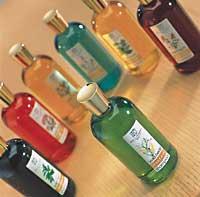
The word xanpu comes from the Hindu language. XIX. In the second half of the twentieth century, shampoo was the massage that was produced on the head in the most refined hairdressers of England, while washing the hair, and not the product that was used to clean it. The basic formula of this product was the same in all hairdressers (water, soap and soda), but kept in secret the measure of these raw materials and the rest of the ingredients that added them.
But the real revolution was brought by the detergents to the world of shampoos. Therefore, it is said that the precursor of the present shampoos was produced in Germany in 1890, when the first shampoo with detergent was made for the first time instead of soap. However, this merit is often recognized to Americans because they were the first to produce and use shampoo in large quantities.
Over time it has been adapting the formula of shampoos depending on the pH of the skin of the head, the type of hair and, how not, the needs and demands of the customers. In the cosmetics of the hair much money is invested, in short, the research seeks the most suitable shampoo for each situation. In addition, today the range of shampoos is increasingly wide, since if the hair is curly or smooth, long or short, light or dark, oily or dry, dyed or natural, there is a shampoo that adapts to your hair.
Every year, billions of euros are spent on hair arrangement products. Previously, the items available in the home were used according to the needs: traditional soap for hair washing, brushed and sparkling vinegar, head hazel water, etc. At present, however, there is a great variety in the market. There are special products for any need.

Gai honi buruzko eduki gehiago
Elhuyarrek garatutako teknologia



